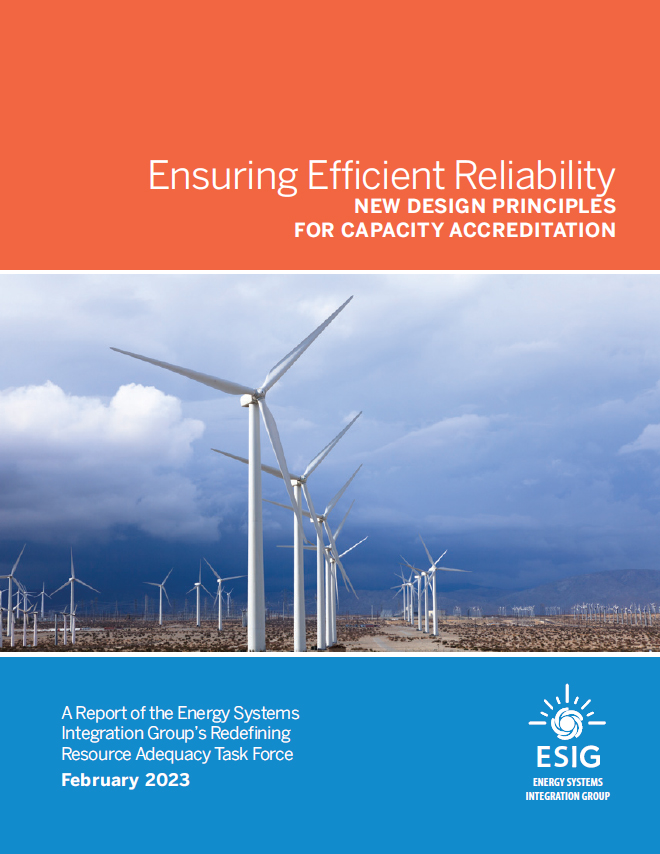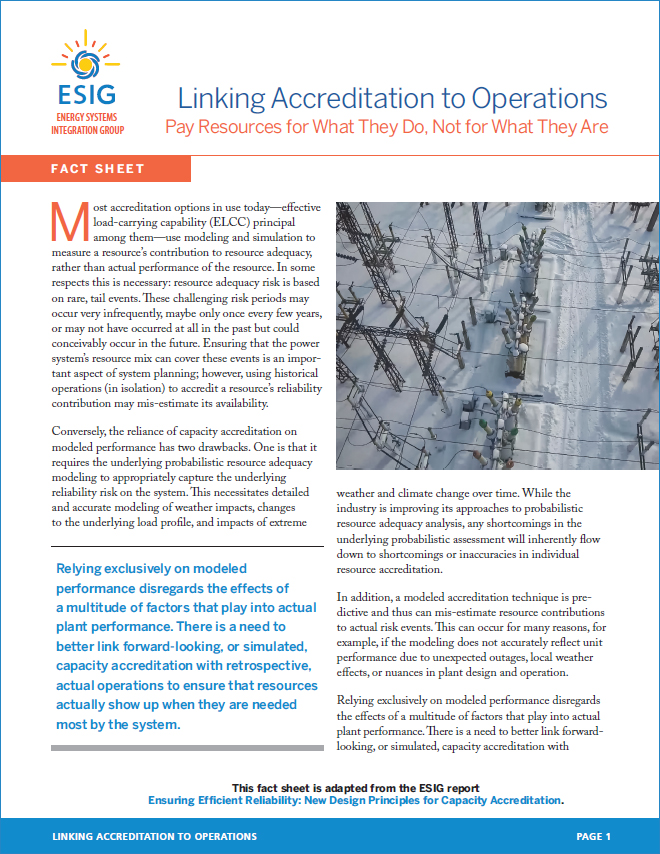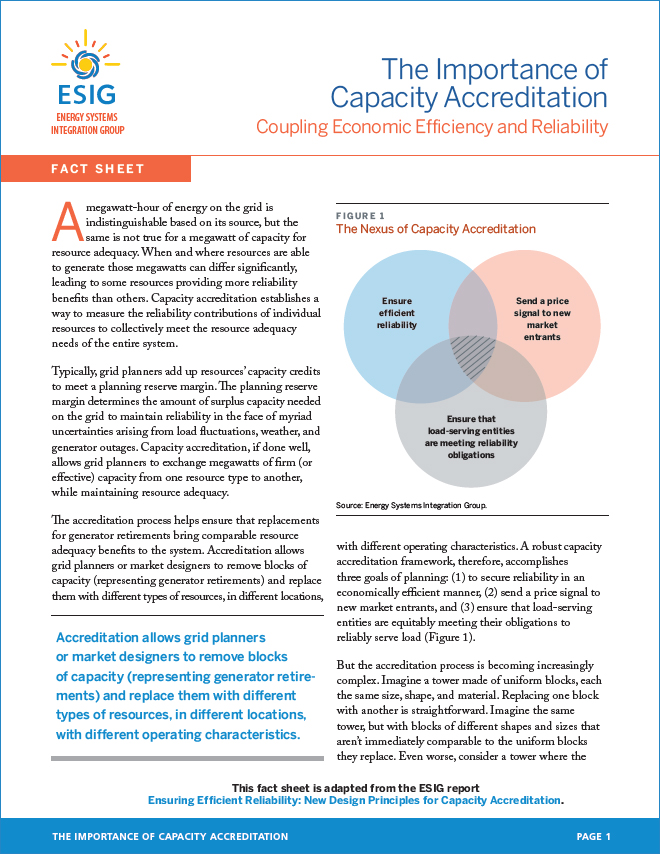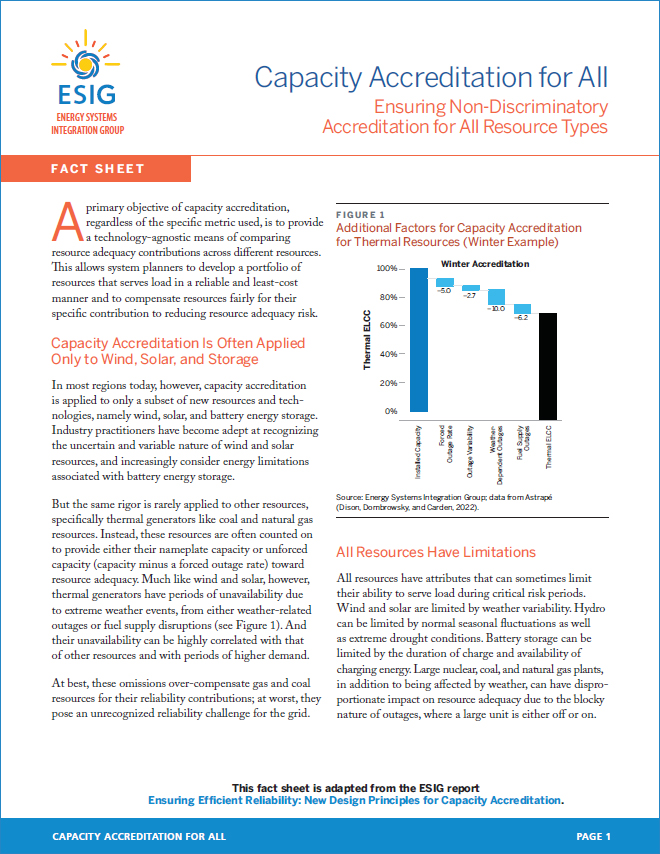Ensuring Efficient Reliability: New Design Principles for Capacity Accreditation discusses key considerations for capacity accreditation for the next phase of the energy transition in which solar, wind, and battery storage will be increasingly relied on to ensure grid reliability.
 As the power system changes due to increased renewables, coal and gas retirements, and the growing use of storage and load flexibility for reliability, new methods are needed to measure each resource’s contribution toward reliability. Capacity accreditation measures the contribution of individual resources toward meeting the system’s resource adequacy, and ESIG’s Redefining Resource Adequacy Task Force developed a gap analysis of current accreditation methods to understand where the industry’s processes and accreditation techniques currently fall short, and to describe the most viable improvements to current techniques at this point in time.
As the power system changes due to increased renewables, coal and gas retirements, and the growing use of storage and load flexibility for reliability, new methods are needed to measure each resource’s contribution toward reliability. Capacity accreditation measures the contribution of individual resources toward meeting the system’s resource adequacy, and ESIG’s Redefining Resource Adequacy Task Force developed a gap analysis of current accreditation methods to understand where the industry’s processes and accreditation techniques currently fall short, and to describe the most viable improvements to current techniques at this point in time.
Traditionally, wind, solar, and storage were procured primarily to produce energy, displace fuel, and reduce emissions, but the next phase of the energy transition will increasingly look to them to ensure reliability. Ensuring Efficient Reliability: New Design Principles for Capacity Accreditation details the ways that resources are accredited today, how those processes are evolving with a changing resource mix, and limitations inherent in these techniques, and it provides suggestions on ways to simplify the approaches to ensure they can be used across all resource types in a more transparent manner. The report provides a framework and foundational pillars that can be used throughout the industry to improve accreditation processes and ensure resource adequacy in the future.
“Capacity accreditation for all” is a growing refrain across the electric power sector that captures the sentiment of non-discriminatory treatment. This report discusses how, if capacity accreditation is used to measure the performance of one type of resource, it should be applied to all types of resources in a similar manner. In addition, since a perfect accreditation calculation can still result in a resource not showing up even if it was capable of producing power during the event, accreditation approaches need to be linked to operations in order to ensure that resources deliver in the moment.
The report concludes with six recommendations:
- Ensure that the foundational pillars are clearly communicated to stakeholders.
- Be cautious if using capacity credits—in isolation—as the basis for ensuring reliability.
- Consider accreditation methods that evaluate not only a resource’s capacity, but also energy available during periods of high risk.
- Accredit all resource types using similar metrics and methods.
- Align incentives in capacity accreditation and real-time performance, in order to not only simulate availability during typical risk periods but ensure performance during actual scarcity events.
- Evaluate methods to simplify and streamline accreditation calculation techniques.
Download Corresponding Fact Sheets:






